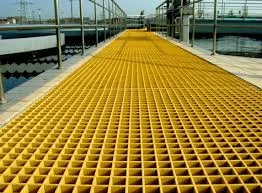
-
 Afrikaans
Afrikaans -
 Albanian
Albanian -
 Amharic
Amharic -
 Arabic
Arabic -
 Armenian
Armenian -
 Azerbaijani
Azerbaijani -
 Basque
Basque -
 Belarusian
Belarusian -
 Bengali
Bengali -
 Bosnian
Bosnian -
 Bulgarian
Bulgarian -
 Catalan
Catalan -
 Cebuano
Cebuano -
 China
China -
 China (Taiwan)
China (Taiwan) -
 Corsican
Corsican -
 Croatian
Croatian -
 Czech
Czech -
 Danish
Danish -
 Dutch
Dutch -
 English
English -
 Esperanto
Esperanto -
 Estonian
Estonian -
 Finnish
Finnish -
 French
French -
 Frisian
Frisian -
 Galician
Galician -
 Georgian
Georgian -
 German
German -
 Greek
Greek -
 Gujarati
Gujarati -
 Haitian Creole
Haitian Creole -
 hausa
hausa -
 hawaiian
hawaiian -
 Hebrew
Hebrew -
 Hindi
Hindi -
 Miao
Miao -
 Hungarian
Hungarian -
 Icelandic
Icelandic -
 igbo
igbo -
 Indonesian
Indonesian -
 irish
irish -
 Italian
Italian -
 Japanese
Japanese -
 Javanese
Javanese -
 Kannada
Kannada -
 kazakh
kazakh -
 Khmer
Khmer -
 Rwandese
Rwandese -
 Korean
Korean -
 Kurdish
Kurdish -
 Kyrgyz
Kyrgyz -
 Lao
Lao -
 Latin
Latin -
 Latvian
Latvian -
 Lithuanian
Lithuanian -
 Luxembourgish
Luxembourgish -
 Macedonian
Macedonian -
 Malgashi
Malgashi -
 Malay
Malay -
 Malayalam
Malayalam -
 Maltese
Maltese -
 Maori
Maori -
 Marathi
Marathi -
 Mongolian
Mongolian -
 Myanmar
Myanmar -
 Nepali
Nepali -
 Norwegian
Norwegian -
 Norwegian
Norwegian -
 Occitan
Occitan -
 Pashto
Pashto -
 Persian
Persian -
 Polish
Polish -
 Portuguese
Portuguese -
 Punjabi
Punjabi -
 Romanian
Romanian -
 Russian
Russian -
 Samoan
Samoan -
 Scottish Gaelic
Scottish Gaelic -
 Serbian
Serbian -
 Sesotho
Sesotho -
 Shona
Shona -
 Sindhi
Sindhi -
 Sinhala
Sinhala -
 Slovak
Slovak -
 Slovenian
Slovenian -
 Somali
Somali -
 Spanish
Spanish -
 Sundanese
Sundanese -
 Swahili
Swahili -
 Swedish
Swedish -
 Tagalog
Tagalog -
 Tajik
Tajik -
 Tamil
Tamil -
 Tatar
Tatar -
 Telugu
Telugu -
 Thai
Thai -
 Turkish
Turkish -
 Turkmen
Turkmen -
 Ukrainian
Ukrainian -
 Urdu
Urdu -
 Uighur
Uighur -
 Uzbek
Uzbek -
 Vietnamese
Vietnamese -
 Welsh
Welsh -
 Bantu
Bantu -
 Yiddish
Yiddish -
 Yoruba
Yoruba -
 Zulu
Zulu
Innovative Technologies for Efficient and Sustainable FRP Mining Equipment Solutions Today
The Importance of FRP Mining Equipment in Modern Mining Operations
In recent years, the mining industry has undergone significant advancements in technology and equipment, leading to increased efficiency, safety, and sustainability. Among these advancements, the use of Fiber-Reinforced Polymer (FRP) mining equipment has emerged as a game changer. FRP materials, known for their high strength-to-weight ratio, corrosion resistance, and durability, are revolutionizing how mining operations are conducted.
Understanding FRP Materials
Fiber-Reinforced Polymers are composite materials made from a polymer matrix reinforced with fibers, typically glass, carbon, or aramid. The unique properties of FRP materials make them ideal for various applications in the mining sector. They offer excellent mechanical properties while being significantly lighter than traditional materials like steel. This reduction in weight translates to lower transportation costs and easier handling on-site, which is crucial in remote mining locations.
Enhanced Safety
Safety is a top priority in mining operations. The harsh conditions and hazardous environments present significant risks to personnel and equipment. FRP mining equipment contributes to enhanced safety through its non-conductive properties, making it ideal for use in environments where electrical hazards are possible. Additionally, FRP does not corrode, which means that equipment made from these materials has a longer lifespan and requires less maintenance. This reliability reduces the chances of equipment failure, thus ensuring safer working conditions for miners.
Environmental Benefits
frp mining equipment

As the world moves towards more sustainable practices, the mining industry is also seeking to reduce its environmental impact. The production of FRP materials can be less energy-intensive than that of steel and aluminum, leading to lower carbon emissions during manufacturing. Furthermore, FRP equipment is often used for wastewater management and containment systems in mining operations, helping to prevent harmful substances from contaminating local water sources. The lightweight nature of FRP also means that less energy is used for transport and installation, contributing further to environmental sustainability.
Versatility and Customization
One of the standout features of FRP mining equipment is its versatility. FRP can be molded into various shapes and sizes, allowing for highly customized solutions to meet the specific needs of mining operations. Whether it is used for conveyor systems, pipes, or safety barriers, the adaptability of FRP materials ensures that mining companies can optimize their processes with tailored equipment. This customization can lead to significant improvements in operational efficiency, ultimately enhancing productivity.
Cost-Effectiveness
While the initial investment in FRP equipment may be higher than traditional materials, the long-term benefits often outweigh these costs. The durability and low maintenance requirements of FRP mean less frequent replacements and repairs, resulting in lower operational costs over time. Additionally, the efficiency improvements gained from using lightweight, high-strength materials can lead to increased productivity, further justifying the investment.
Conclusion
In conclusion, FRP mining equipment represents a significant advancement in the mining industry, offering numerous benefits ranging from enhanced safety and environmental sustainability to cost-effectiveness and versatility. As the demand for minerals continues to rise, the integration of FRP materials into mining operations will play a crucial role in ensuring that the industry can meet these demands in a responsible and efficient manner. The future of mining is set to be shaped by innovative materials and technologies, with FRP at the forefront of this evolution. By adopting FRP mining equipment, companies are not only investing in their operations but are also contributing to a more sustainable and safer mining industry.
Latest news
-
Oblate Tanks: Space-Saving, Durable Liquid Storage SolutionsNewsAug.27,2025
-
High-Performance Piping System Solutions for Industry & Commercial UseNewsAug.26,2025
-
Precision Fittings: Durable & Reliable Industrial & Plumbing SolutionsNewsAug.25,2025
-
Practical Steps: Unlock Success with Our Proven GuidesNewsAug.24,2025
-
Transport Tanks: Safe, Durable & Efficient Liquid HaulingNewsAug.23,2025
-
High-Quality Piping Systems for Efficient Flow & DurabilityNewsAug.22,2025









